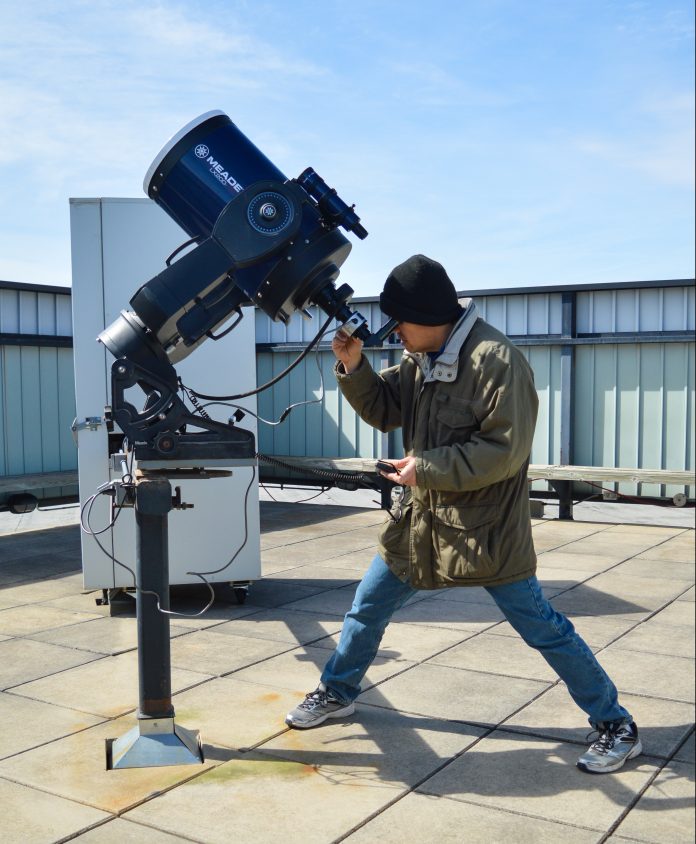
Thomas Foote
Staff reporter
For astronomy professor Doug Patterson, Mondays can be easily ruined if there’s rain and cloudy skies.
Mondays are the day that Patterson takes his students up to the roof above the fifth floor of the CLB to observe the sky. It’s a memorable trip for new students who have never gone to the observatory before.
“What’s fun is when you show them Saturn through the telescope, you can actually see the rings, the banding in the atmosphere,” Patterson said.
There are two mounted main telescopes in the Paul Tebbe observatory on the roof of the CLB, both having lenses that are twelve inches in diameter. There is also an assortment of eight inch diameter telescopes placed around the observatory.
“Instead of having one telescope that we are moving from spot to spot, we have multiple telescopes that can rotate,” Patterson said.
Students get excited about seeing planetary and lunar objects in detail for the first time. For Patterson, there’s some objects and sightings that can still get him overly excited.
“Probably the most remarkable sight that we had was without a telescope,” Patterson said. “It’s very rare that we get to see the Northern Lights this far south.”
Patterson and his student were able to see the Northern Lights above the International Space Laboratory, a natural phenomenon that Patterson had just taught the students about in class. Another stand out during that trip to the observatory was watching Venus transit across the sun. The observatory was overflowing with people and the line reached down the stairs.
Prior to his teaching career, Patterson was seemingly headed for a career in the arts. Patterson is an avid photographer and motorsports enthusiast, having photographed the Indianapolis 500 six times. After taking a physics class, however, he turned his attention to the stars.
“There is a tremendous amount of physics in motorsports,” Patterson said. “Astronomy is the physics that happens above our atmosphere.”
There is little doubt that Patterson’s passion for motorsports contributed to his interest in physics.
“I was born in Indiana, there are two things in my blood- basketball and racing fuel,” Patterson said.
There are several bells and whistles to the observatory as well. They use red light in order to preserve night vision. They have tiles that give a walking on the moon effect, designed to isolate the telescopes from any vibration that might affect the view from the telescopes. The observatory has cardinal points that can easily point students in each of the cardinal directions, which in turn makes it easier to then direct students where to look in the sky.
There also is a small white camera that scans for meteors. It is one of several dozen that information is collected from and gathered together in New Mexico.
The Astronomy program and the observatory has equipment that some four year colleges do not have in their programs. The observatory is named after Paul Tebbe, who started the Astronomy program at the college and fought to get the necessary equipment.
“All the credit for the strength of the Astronomy program that we have today goes to Professor Paul Tebbe,” Patterson said. “He was an absolute bulldog as to seeing to the needs of the program.”
The observatory will be open to the public on April 29, weather permitting, for its annual “Evening with the Stars” event. The event will feature a presentation on relativity including black holes.





















